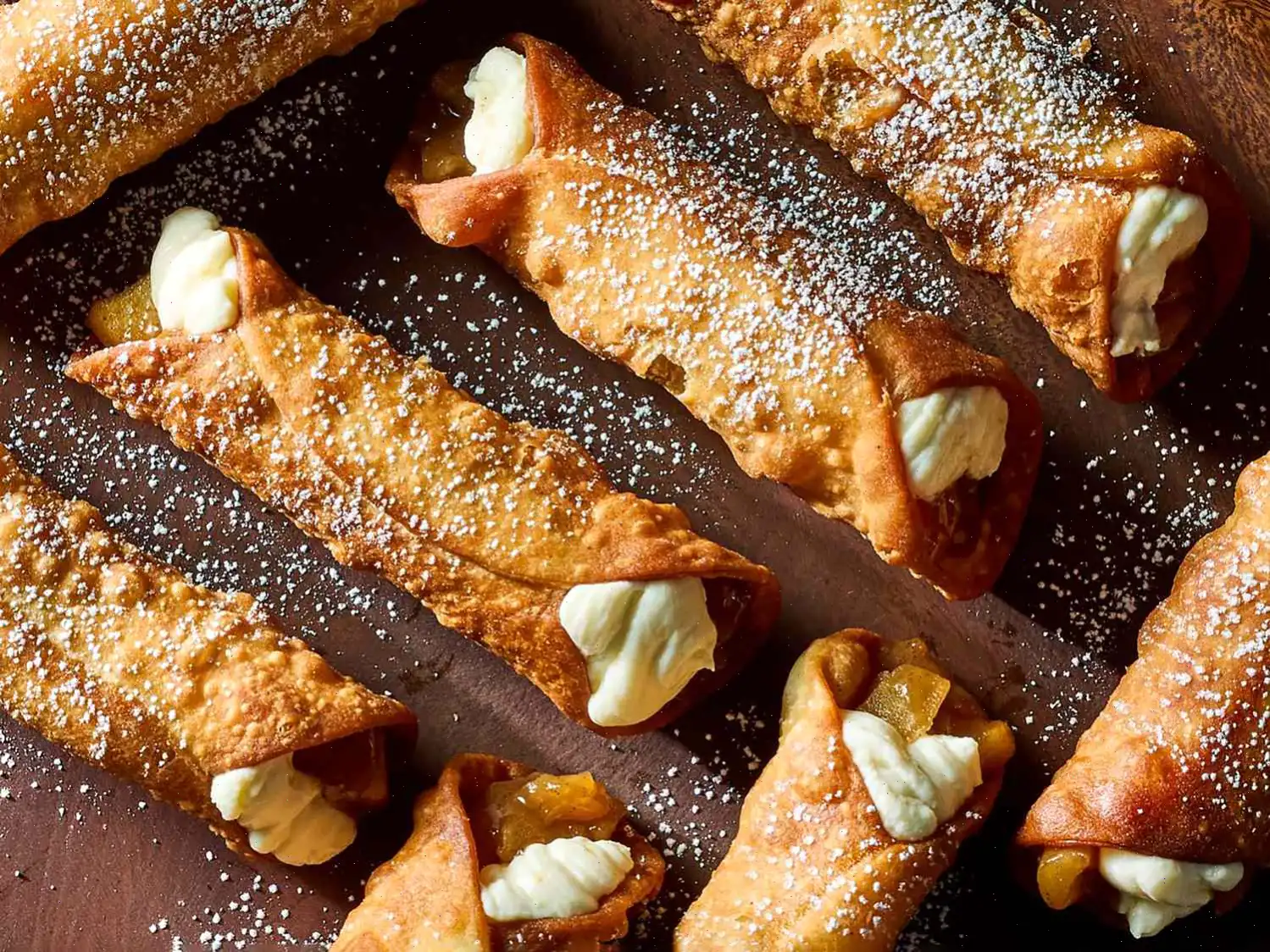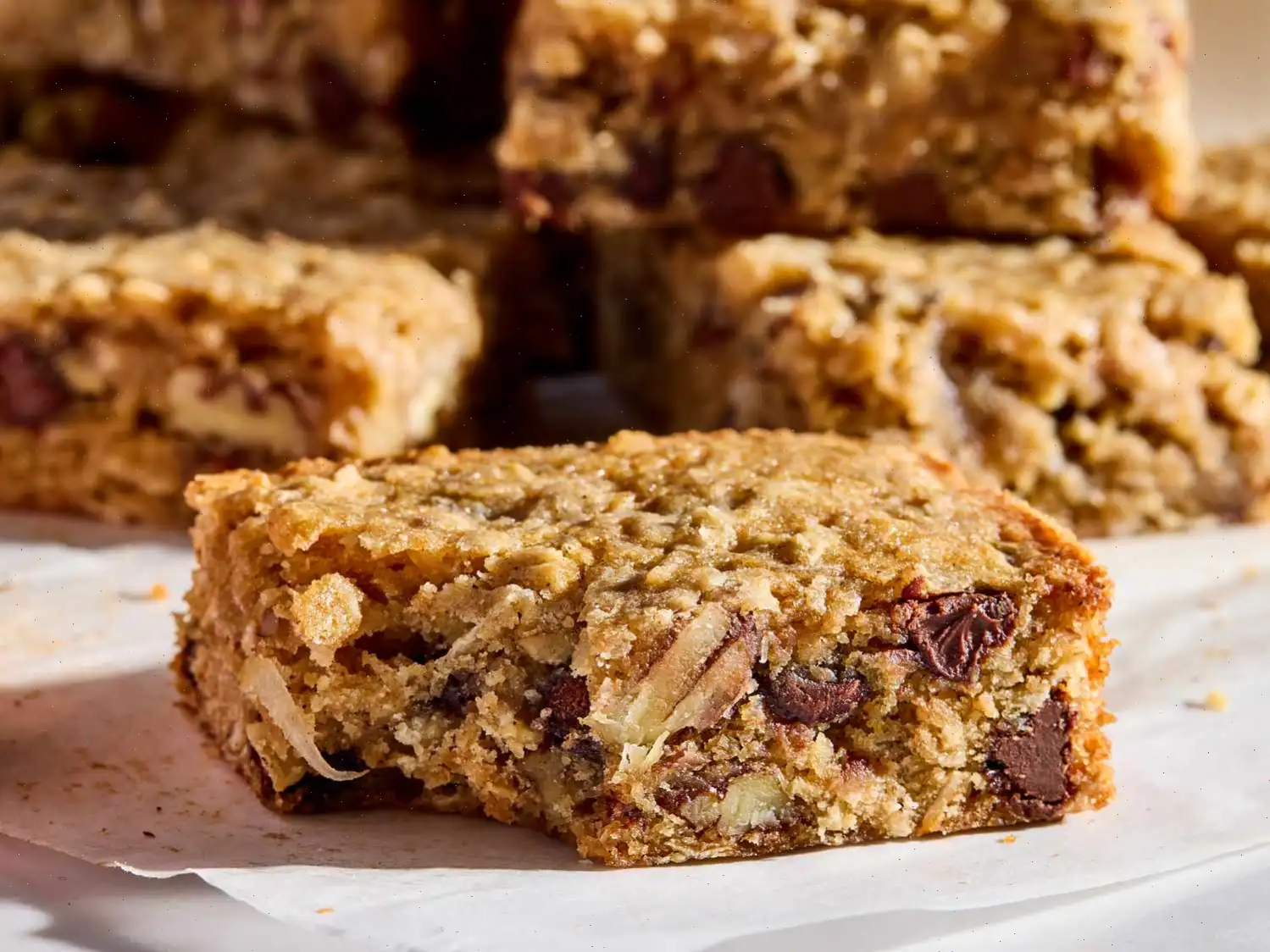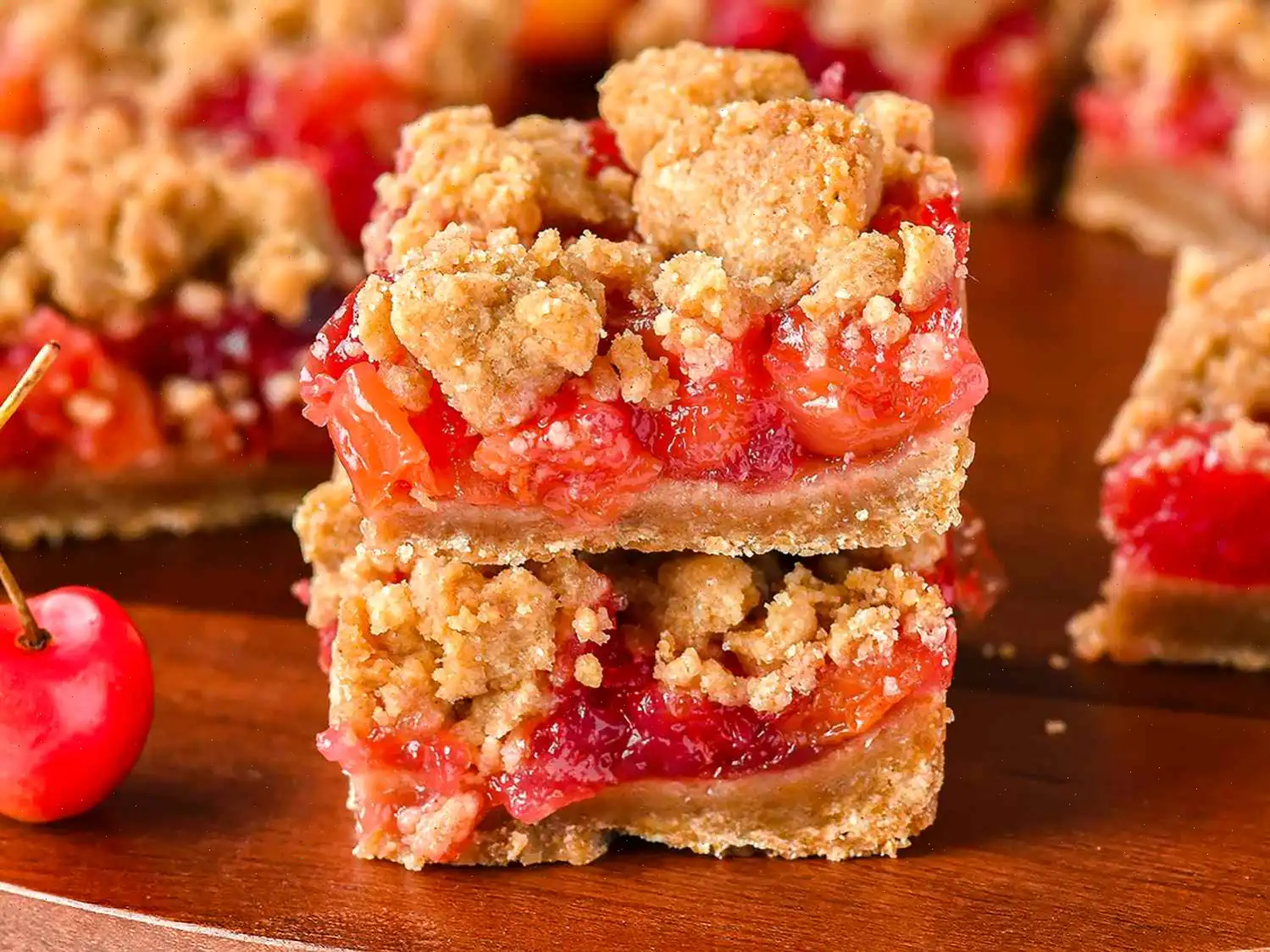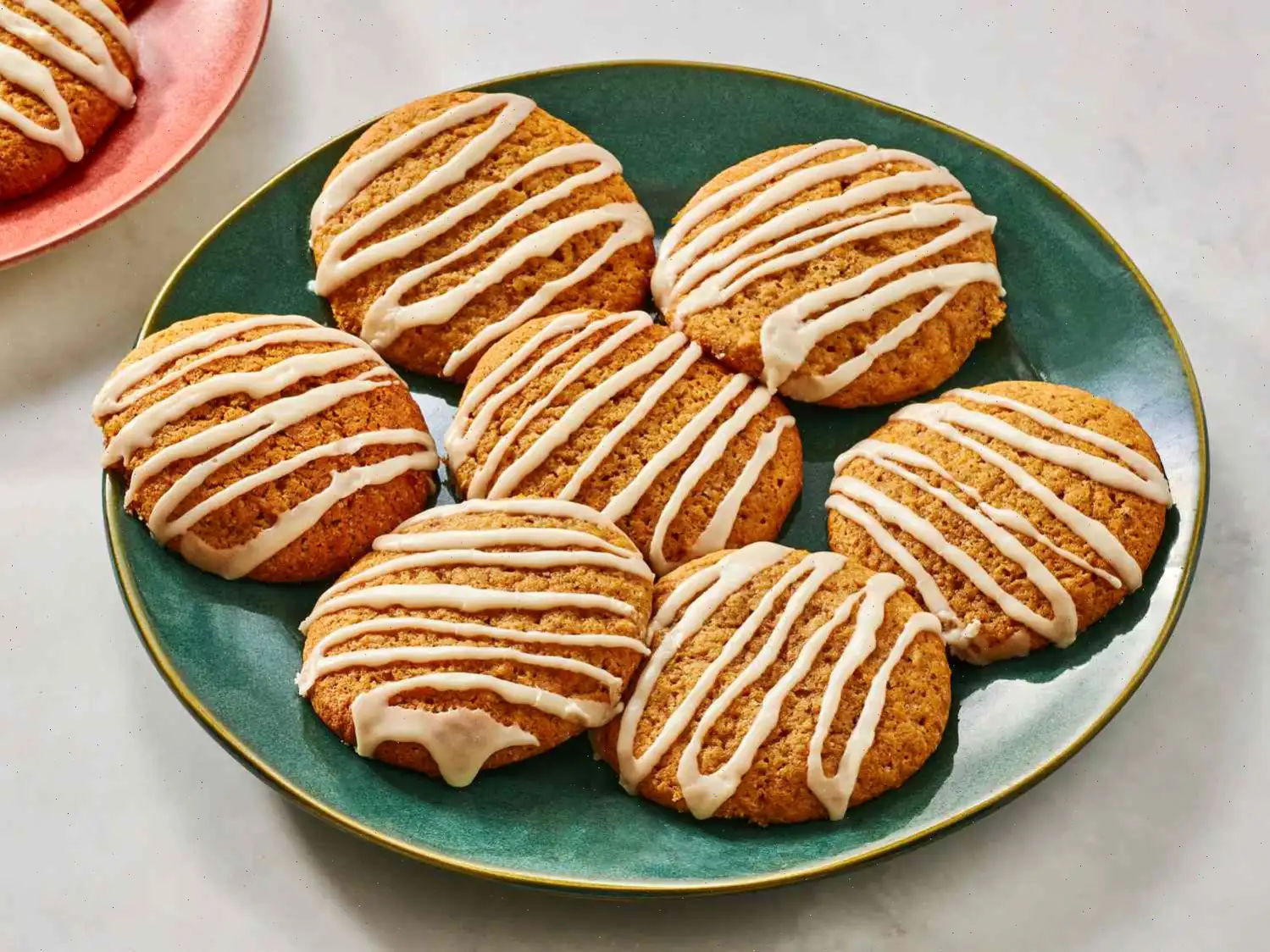
Apple Cannoli Recipe
Ingredients
This recipe is designed for its original yield of 24 servings. Ingredient amounts scale automatically, but cooking times and techniques remain unchanged. Note that not all recipes scale perfectly.
Dough
- 1 1/2 cups all-purpose flour, plus extra for dusting
- 2 tablespoons white sugar
- 1/8 teaspoon ground cinnamon
- 2 tablespoons vegetable shortening
- 1 large egg
- 1/4 cup Marsala wine
- 1 tablespoon water, plus more if needed
- 2 teaspoons distilled white vinegar
Apple Filling
- 2 tablespoons butter
- 4 large Granny Smith apples, peeled and diced
- 1 cup packed brown sugar
- 2 teaspoons apple pie spice
- 1/4 teaspoon salt
- 1/4 cup lemon juice
- 1/4 cup cornstarch
Ricotta Filling
- 1 (16-ounce) tub whole milk ricotta cheese, drained
- 1/4 cup confectioner's sugar, plus more for garnish
- 1 teaspoon lemon zest
Shells
- 1 large egg white, lightly beaten
- 1 quart vegetable oil for frying, or as needed
Directions
1. Prepare the Dough
In a large bowl, combine flour, sugar, and cinnamon. Cut in the shortening with a pastry blender or fork until the mixture resembles coarse crumbs. Create a well in the center and add the egg, Marsala, water, and vinegar. Mix gently with a fork until the dough begins to come together. Transfer to a lightly floured surface and knead until smooth, about 10 minutes, adding a teaspoon of water if needed. Wrap in plastic wrap and refrigerate for at least 30 minutes, or overnight.
2. Make the Apple Filling
Melt butter in a saucepan over medium heat. Add the diced apples, brown sugar, apple pie spice, and salt. Cook, stirring occasionally, until apples are tender, about 15 minutes. In a small bowl, whisk together lemon juice and cornstarch, then stir into the apple mixture. Simmer until thickened, 3-5 minutes, then cool completely. Transfer to a pastry bag for filling.
3. Prepare the Ricotta Filling
In a bowl, combine the drained ricotta and confectioner's sugar. Fold in the lemon zest gently. Transfer to a pastry bag for assembly.
4. Shape and Fry Shells
Divide the dough into two balls. On a floured surface, roll one ball into a 16-18 inch circle, about 1/16 inch thick. Cut 12 circles using a 4-5 inch cutter and dust lightly with flour. Wrap each circle around a cannoli tube, sealing edges with egg white. Repeat with the second dough ball.
Pour oil to a depth of 3 inches in a deep, heavy-bottomed pot or deep fryer. Heat to 375F. Fry the shells in batches on the tubes, turning halfway through, until golden, about 1 minute. Drain on a wire rack lined with paper towels. Once cool enough, carefully remove the tubes.
5. Assemble the Cannoli
Pipe the apple filling into each shell, filling about two-thirds from center to one end. Repeat on the other side. Next, pipe the ricotta filling in the same way. Dust with confectioner's sugar before serving.
6. Draining Ricotta
To drain ricotta, line a fine-mesh strainer with cheesecloth over a bowl. Place the ricotta inside, cover with plastic wrap, and weigh down with a heavy object (like a 28-oz can). Refrigerate for at least 8 hours, up to 24 hours. Discard any liquid before using.
Cooks Tips
- Make Ahead: Unfilled shells can be stored in an airtight for up to 1 month.
- Fillings: Keep apple and ricotta fillings in separate airtight s for up to 3 days.
- Fill shells no more than 1 hour before serving.
Nutrition Facts (per serving)
- Calories: 157
- Total Fat: 7g (9%)
- Saturated Fat: 2g (11%)
- Cholesterol: 21mg (7%)
- Sodium: 59mg (3%)
- Total Carbohydrate: 22g (8%)
- Dietary Fiber: 1g (4%)
- Total Sugars: 13g
- Protein: 2g (4%)
- Vitamin C: 0mg (1%)
- Calcium: 24mg (2%)
- Iron: 1mg (3%)
- Potassium: 77mg (2%)
*Percent Daily Values are based on a 2,000 calorie diet. Nutrient information may vary depending on cooking methods and ingredient brands.
The History and Origins of Apple Cannoli
Apple cannoli is a contemporary twist on the traditional Sicilian cannoli, a dessert that dates back to at least the 9th century during Arab rule in Sicily. Originally, cannoli were made as a treat for Carnevale celebrations, symbolizing fertility and prosperity. The classic recipe features a fried pastry shell filled with sweetened ricotta cheese, often enhanced with chocolate chips or candied fruit. The apple variation emerged in the United States as Italian immigrants adapted the dessert to locally available ingredients, substituting part of the traditional filling with spiced apple compote to reflect American tastes.
Regional Variations and Specialties
While Sicilian cannoli traditionally focus on ricotta and pistachios, the apple cannoli has gained popularity in regions with abundant apple harvests, such as the northeastern United States. Bakers in New England, for example, often incorporate Granny Smith or Honeycrisp apples for their tartness, balancing the sweetness of the ricotta and sugar. Some variations may include a touch of cinnamon, nutmeg, or allspice in the apple filling, creating a flavor profile reminiscent of apple pie. In Italy, fruit-filled cannoli remain uncommon, highlighting the innovation behind this hybrid dessert.
Differences from Similar Desserts
Apple cannoli differ from other stuffed pastries such as strudel or turnover primarily in texture and assembly. Unlike strudel, where dough is thinly rolled and layered, cannoli shells are deep-fried, resulting in a crispy, crunchy exterior. The dual fillingapple compote combined with creamy ricottadistinguishes it from plain apple fritters or tarts, offering a layered flavor and texture experience. The use of cannoli molds during frying also ensures a uniform tubular shape, which is unique compared to the free-form or folded shapes of other apple desserts.
Where Apple Cannoli Are Commonly Served
Apple cannoli are often featured in Italian-American bakeries, upscale cafes, and family gatherings during fall or holiday seasons when apples are in peak availability. They are also popular at dessert buffets, weddings, and festive brunches, where their elegant presentation and combination of flavors make them a crowd-pleaser. In restaurants, apple cannoli may be served individually on small plates dusted with powdered sugar, sometimes accompanied by a drizzle of caramel or a scoop of vanilla gelato.
Interesting Facts and Culinary Notes
- The crispiness of the cannoli shell comes from frying at a precise temperature, typically around 375F, ensuring the shell puffs slightly while remaining golden and crunchy.
- Apple cannoli allow for creative fillings beyond traditional ricotta, including mascarpone, cream cheese, or flavored custards.
- The dessert reflects the broader trend of Italian-American cuisine, blending authentic recipes with regional ingredients to create new variations.
- Despite its American adaptation, apple cannoli maintains the essential balance of texturescrunchy shell, soft fruit, and creamy cheesethat define traditional cannoli.
- Chilling the fillings and assembling cannoli just before serving ensures the shell remains crisp, a tip often emphasized by pastry chefs.








